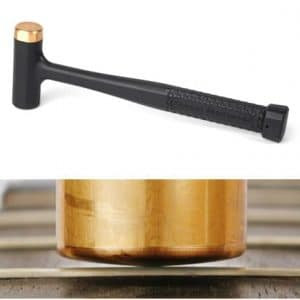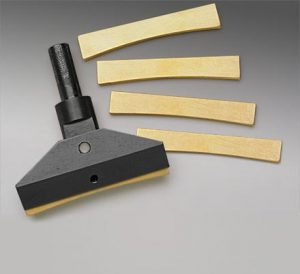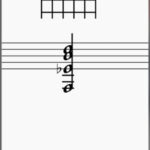Installing Guitar Frets is a critical step in guitar construction, impacting playability, sound, and longevity. For those new to guitar building, the array of methods and tools can seem daunting. While numerous approaches exist, understanding the core tools—the fret press and the dead blow fret hammer—is fundamental. This article breaks down these two essential tools, exploring their strengths and weaknesses to guide you in achieving optimal fret installation. For a detailed visual guide and deeper insights into advanced techniques, you might want to explore resources like Fretwork Mastery Part 1.
Understanding Guitar Fret Installation: Hammer vs. Press
The primary goal of guitar fret installation is to seat the guitar fret wire firmly and consistently within the fret slots of the fingerboard. A tight, solid seating is crucial for minimizing subsequent fretwork like fret crowning, ensuring clean intonation, and maximizing the instrument’s overall sonic quality and playing comfort. Ultimately, well-installed guitar frets are essential for a guitar that feels and sounds professional.
Luthiers often develop preferences for either a fret press or a hammer-in method. Each approach offers distinct advantages. Many, including myself, find a hybrid approach, combining elements of both, to be the most effective. To understand why, let’s delve into the requirements of proper fret installation and then examine each tool individually, highlighting their benefits in achieving superior fret seating and enhancing your guitar builds.
Hammer-In Fretting: The Traditional Technique
 Luthier using a dead blow hammer to install guitar frets
Luthier using a dead blow hammer to install guitar frets
For many starting their journey in guitar making, the hammer is the initial tool of choice for guitar fret installation. While mastering the hammer technique requires practice and a keen eye, it’s a skill achievable with focused effort and attention to detail. The challenge with hammering is controlling the force to prevent fret ends from lifting, which can hinder proper seating. Using a specialized dead-blow fret hammer is highly recommended to mitigate this issue.
Pros of Hammer-In Fretting:
- Cost-Effective Entry: A basic hammer is a relatively inexpensive starting point for fret installation.
- Versatility: Hammers are easily maneuverable, making them ideal for working on the guitar body, performing refrets, and addressing frets on finished necks.
- Practical for Repairs: Excellent for fret replacements and repairs, particularly on assembled instruments.
Cons of Hammer-In Fretting:
- Technique Sensitivity: Improper hammering can lead to uneven fret seating and lifted fret ends.
- Noise Level: Hammering is loud, necessitating hearing protection.
- Risk to Finish: Striking a hammer on a finished guitar neck can be nerve-wracking due to the potential for damage.
Fret Press Fretting: Precision and Controlled Seating
 Fret press caul with interchangeable inserts for radius fret installation
Fret press caul with interchangeable inserts for radius fret installation
A fret press offers a more controlled and precise method for installing guitar frets. Fret presses range from simple drill press attachments (a common setup) to more elaborate, dedicated systems. While a fret press system may involve a slightly larger initial investment and setup, it offers significant advantages, especially for those still developing their hammering skills. A key benefit of using a fret press is its ability to maintain the correct fingerboard radius as the fret is pressed into place. This ensures consistent pressure across the fret and helps prevent fret ends from lifting.
Pros of Fret Press Fretting:
- Consistent Fret Seating: Provides more uniform pressure, significantly reducing the issue of fret ends springing up.
- Faster Installation: Can speed up the fret installation process, especially for repetitive tasks.
- Quiet Operation: Operates quietly, eliminating the noise associated with hammering.
Cons of Fret Press Fretting:
- Higher Initial Cost: Generally more expensive than purchasing a hammer.
- Limited Accessibility: Can be less convenient for working over the guitar body or on finished necks, although specialized presses exist to address this.
- Radius Matching: Standard fret presses may not automatically compensate for subtle variations in fingerboard radius, requiring careful setup.
Embracing a Hybrid Approach to Guitar Fret Installation
For those working with a tight budget, a hammer can certainly suffice for guitar fret installation, and with practice, excellent results are achievable. Experimenting with hammering techniques on scrap wood, such as varying the starting point (center vs. ends), is highly beneficial.
However, the benefits of a fret press in terms of consistency and control are undeniable and can greatly enhance the quality and efficiency of your fretwork. Personally, I advocate for a combined approach. As demonstrated in my guitar fretting course, I utilize a system that incorporates fret preparation techniques, followed by pressing the fret into place, and then using a hammer for final seating and adjustments. This hybrid method allows me to leverage the strengths of both tools, minimizing their individual weaknesses and achieving the best possible guitar fret installation for optimal guitar performance.

